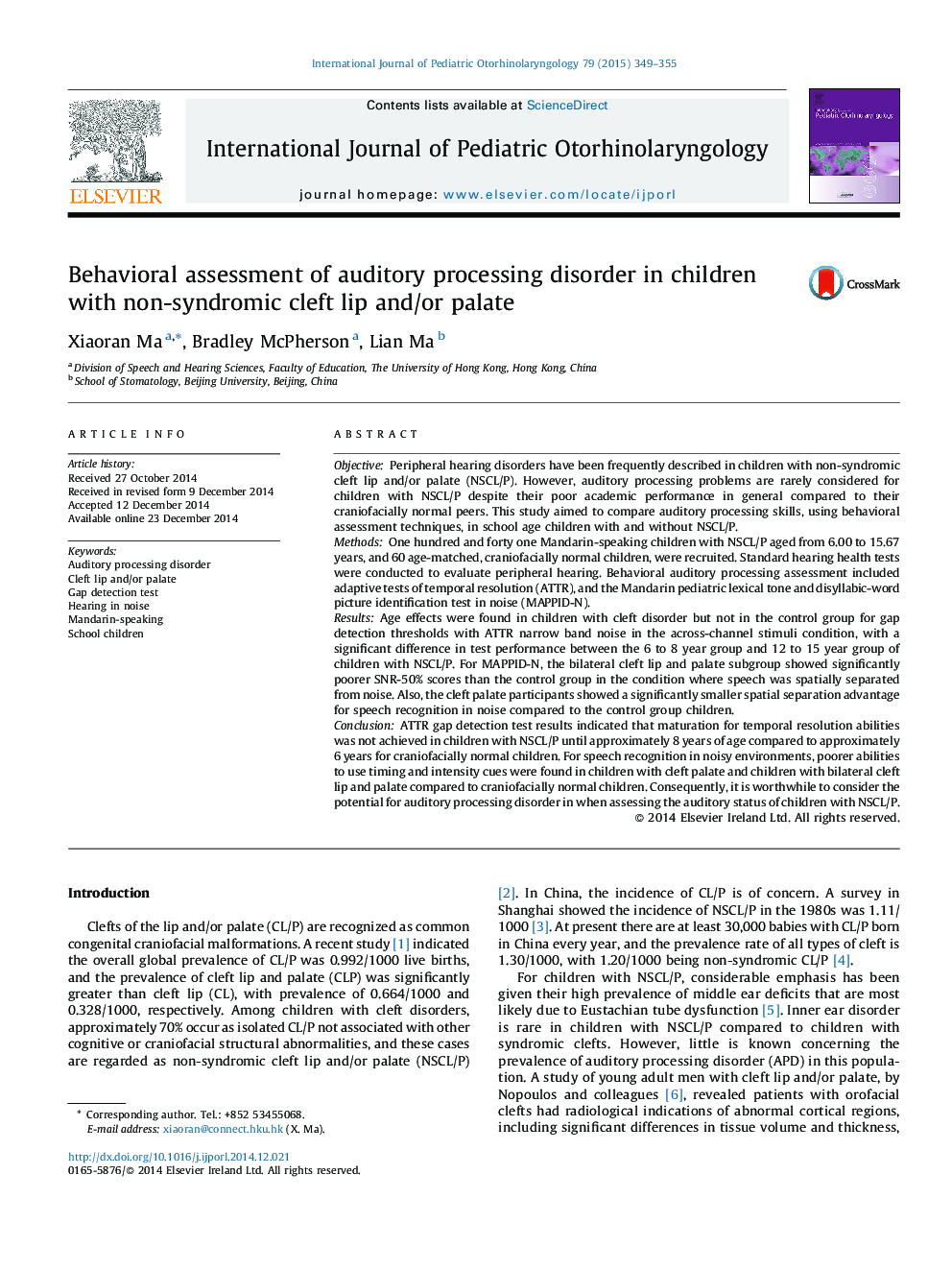| کد مقاله | کد نشریه | سال انتشار | مقاله انگلیسی | نسخه تمام متن |
|---|---|---|---|---|
| 4111967 | 1605998 | 2015 | 7 صفحه PDF | دانلود رایگان |
ObjectivePeripheral hearing disorders have been frequently described in children with non-syndromic cleft lip and/or palate (NSCL/P). However, auditory processing problems are rarely considered for children with NSCL/P despite their poor academic performance in general compared to their craniofacially normal peers. This study aimed to compare auditory processing skills, using behavioral assessment techniques, in school age children with and without NSCL/P.MethodsOne hundred and forty one Mandarin-speaking children with NSCL/P aged from 6.00 to 15.67 years, and 60 age-matched, craniofacially normal children, were recruited. Standard hearing health tests were conducted to evaluate peripheral hearing. Behavioral auditory processing assessment included adaptive tests of temporal resolution (ATTR), and the Mandarin pediatric lexical tone and disyllabic-word picture identification test in noise (MAPPID-N).ResultsAge effects were found in children with cleft disorder but not in the control group for gap detection thresholds with ATTR narrow band noise in the across-channel stimuli condition, with a significant difference in test performance between the 6 to 8 year group and 12 to 15 year group of children with NSCL/P. For MAPPID-N, the bilateral cleft lip and palate subgroup showed significantly poorer SNR-50% scores than the control group in the condition where speech was spatially separated from noise. Also, the cleft palate participants showed a significantly smaller spatial separation advantage for speech recognition in noise compared to the control group children.ConclusionATTR gap detection test results indicated that maturation for temporal resolution abilities was not achieved in children with NSCL/P until approximately 8 years of age compared to approximately 6 years for craniofacially normal children. For speech recognition in noisy environments, poorer abilities to use timing and intensity cues were found in children with cleft palate and children with bilateral cleft lip and palate compared to craniofacially normal children. Consequently, it is worthwhile to consider the potential for auditory processing disorder in when assessing the auditory status of children with NSCL/P.
Journal: International Journal of Pediatric Otorhinolaryngology - Volume 79, Issue 3, March 2015, Pages 349–355
